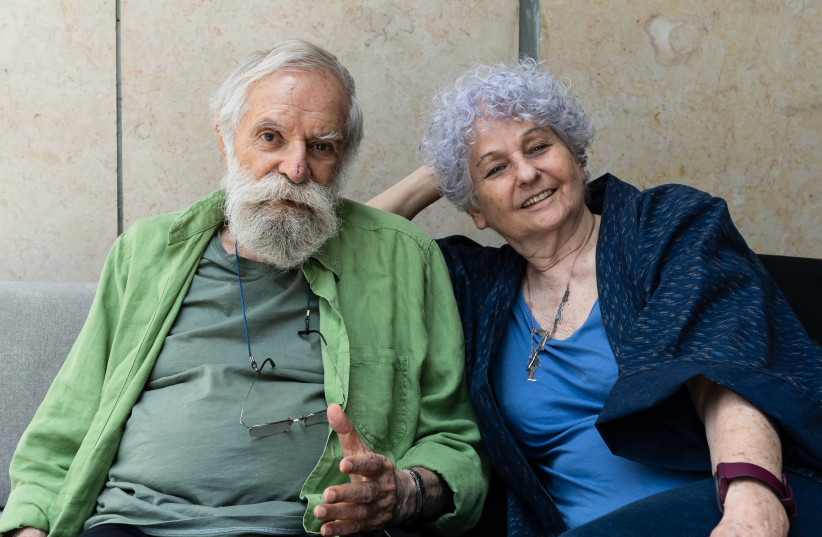Photographer Micha Bar-Am is the subject of 1341 Frames of Love and War, the latest documentary by Ran Tal, which is currently showing in cinematheques around the country as well as on Yes VOD. And Tal has also created an installation based on the movie, The Last Photograph: Ran Tal after Micha Bar-Am, at the Tel Aviv Museum of Art, which opens on June 17 and runs until mid-December.
Bar-Am, 91, is one of the most celebrated Israeli photojournalists of all time and is particularly well known for his battlefield photography. Born in Germany, he emigrated to Israel as a child and eventually became The New York Times’ photographer in Israel, a post he held for decades, as well as a correspondent for the prestigious photographers’ collective Magnum.
Tal, the director of such acclaimed documentaries as Children of the Sun, The Museum, Garden of Eden and, most recently, What If?: Ehud Barak on War and Peace, proves in his film that one picture is worth at least a thousand words, as he fills the screen with Bar-Am’s photographs and avoids the talking-heads clichés of conventional documentaries. Bar-Am speaks about his photographs in the background, but the photos are front and center.
Bar-Am got as close as possible to the action – at times, sustaining serious injuries – and says, “You get close to danger to feel that you are alive.” Yet in spite of the pressures of news photography, he managed to take photographs that are beautifully composed, many of which stand up after decades as works of art. Equally important, his photographs vividly tell the story of each moment he captured, from war after war, to the birth of his son, nature in the desert and many other topics.
Tal said he was drawn to Bar-Am as a subject because, after making the film about Ehud Barak, “who was a player on the historical field, who wanted to change history, I wanted to look at someone who was a witness to history, and no one was as big or as talented as [Bar-Am] in photography.”

Bar-AM's photography
Bar-Am’s photographs tell the history of Israel, featuring moments that are beautiful, ugly, scary and intense. The photographer quickly agreed when Tal presented his concept of focusing on photos and the stories behind them.
“I wanted to look at him through the pictures, to stick to his point of view when he took them,” Tal said.
“I felt that that was what would be interesting, to create a complex picture of his life and career through the pictures he took that show family, war, nature, trauma and everything else.”
Ran Tal
He recorded tens of hours of conversation of Bar-Am talking about his work and he delves into everything from how he managed to take certain pictures – “The more you think, the less good the photograph is,” is one of his maxims – to why he photographed mainly from the Israeli and not the Arab perspective and why certain experiences and situations he photographed led him to despair.
Bar-Am’s wife, Orna, has always been a valued collaborator and her voice is an important one in the film. The two met when they were very young and connected immediately, although they did not get together until after she was briefly married to someone else. Although she did not always travel with him on his assignments, she was an integral part of his career. Tal captures the two of them having a typical old-married-couple argument, only in this case is it about the circumstances of how Bar-Am took a photograph on an IDF raid into Lebanon in the 1970s. It is clear from this and many other moments in the film that she provided him with the support and structure he needed to pursue his passion for photography with single-minded devotion.
His children, who are interviewed in the film, had a more complex relationship with him. While they recall fun moments when they tagged along and met important people with their father, they also remember the laser focus both parents had on Bar-Am’s career. One notes that the news was always playing every half hour at full volume, so that Bar-Am could instantly rush off to take pictures if something interesting was happening. Bar-Am was fascinated by the idea of photographing the birth of his first child, in a time when nobody did this, and he took extraordinary photographs of his son’s first moments, in spite of the hospital’s objections. But the son in question remembers being very embarrassed as a child when these pictures would surface and the documentary reminds us that it is never an unmixed blessing to be born to a famous parent.
In the end, in spite of all their conversations, Bar-Am remains an elusive and, at times, tormented subject, one who will probably never be able to fully explain why so many of his photographs were works of art when news photos by dozens of other photographers at the same scene were forgotten moments after they were published.
But he is crystal clear on one topic: “No picture prevents the next war.”
www.tamuseum.org.il/en/exhibition/last-photograph-ran-tal-after-micha-bar-am/
